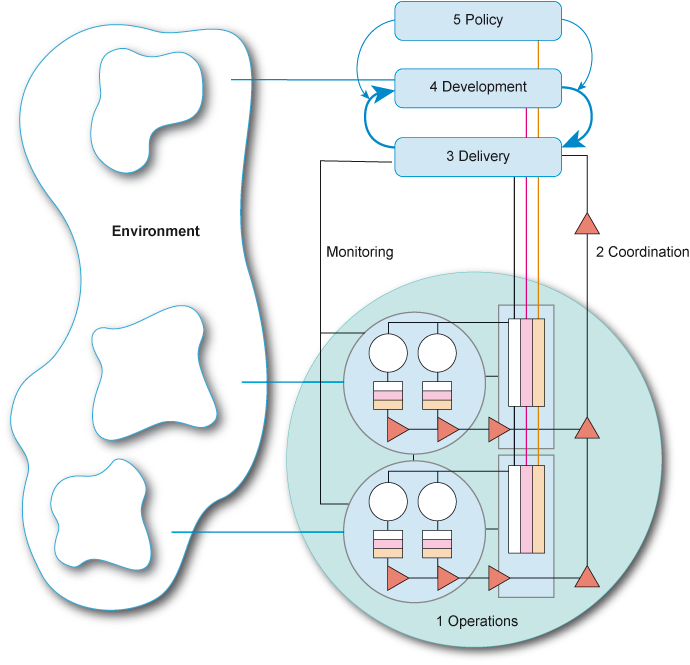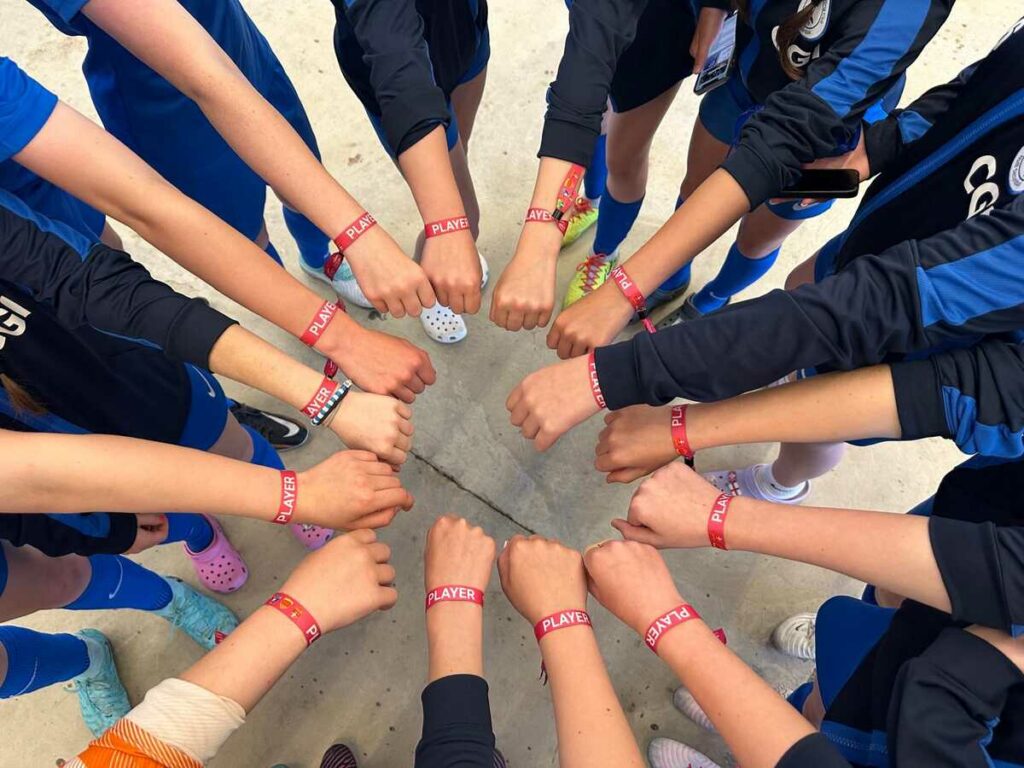TB871: The Viable System Model (VSM)
Note: this is a post reflecting on one of the modules of my MSc in Systems Thinking in Practice. You can see all of the related posts in this category.
The Viable System Model (VSM) is an approach to systems thinking designed by Stafford Beer.
A viable system is any system organised in such a way as to meet the demands of surviving in the changing environment. One of the prime features of systems that survive is that they are adaptable. The VSM expresses a model for a viable system, which is an abstracted cybernetic (regulation theory) description that is claimed to be applicable to any organisation that is a viable system and capable of autonomy.
(Wikipedia, 2024)
The following diagram is a simplified version from the TB871 module materials:
However, it’s more usual to see quite scary-looking and complicated versions which look like this:
The VSM can be used in two ways:
- Diagnostic Tool: The VSM can be used to diagnose a problematic situation by selecting specific features and building an ideal model of the system’s organisational structure. This ideal model is then compared to the actual situation, identifying discrepancies that guide corrective actions to improve the situation.
- Design Tool: The VSM can also be used as a design tool, where one acts directly to create and implement an ideal organisational model to achieve desired outcomes.
In terms of my area of practice, Activity 3.3 asks us to think about “a situation of interest within your chosen area of practice that you think might be suitable for diagnostic modelling in order to redesign.” In particular, we need to “identify and name one particular system of focus which… appears not to be responsive to changes in the environment.”
I’m focused on library services as a situation of interest, which one could say is not responsive to changes in its environment. This could be for several reasons:
- Budget Constraints: the system is experiencing significant budget cuts, limiting its ability to maintain and update educational resources, hire qualified staff, and run educational programmes.
- Technological Advancements: there is likely to be a lag in adopting new technologies and digital tools that could enhance learning and information access. This includes outdated computers, lack of e-books, and insufficient online learning platforms.
- Community Needs: the system is not effectively capturing and responding to the evolving needs of the community. This includes insufficient feedback mechanisms to understand what educational resources and programmes are most in demand.
- Coordination and Management: there are inefficiencies in how educational programmes and resources are coordinated. This could include poor scheduling, overlapping responsibilities, and ineffective communication among staff members.
- Strategic Alignment: the strategic goals of the library may not be fully aligned with the current needs and realities of the community it serves. There may be a lack of clear policies and strategic direction guiding the education and information services.
Wrapped around all of this are outdated notions of what a library is for, along with metrics which don’t adequately capture relevant data. It’s not going to be possible to create a library service from scratch, so my focus is likely to be on using the VSM as a diagnostic tool.
References
- Lambertz, M. (2017) An exemplary model of a viable system. Available at: https://commons.wikimedia.org/wiki/File:VSM_Default_Version_English_with_two_operational_systems.png (Accessed: 14 June 2024).
- The Open University (2020) ‘3.1.1 Dynamic organisational design’, TB871 Block 3 Tools stream [Online]. Available at https://learn2.open.ac.uk/mod/oucontent/view.php?id=2261487§ion=2.1 (Accessed 14 June 2024).
- ‘Viable system model’ (2024) Wikipedia. Available at: https://en.wikipedia.org/w/index.php?title=Viable_system_model&oldid=1228993892 (Accessed: 14 June 2024).



